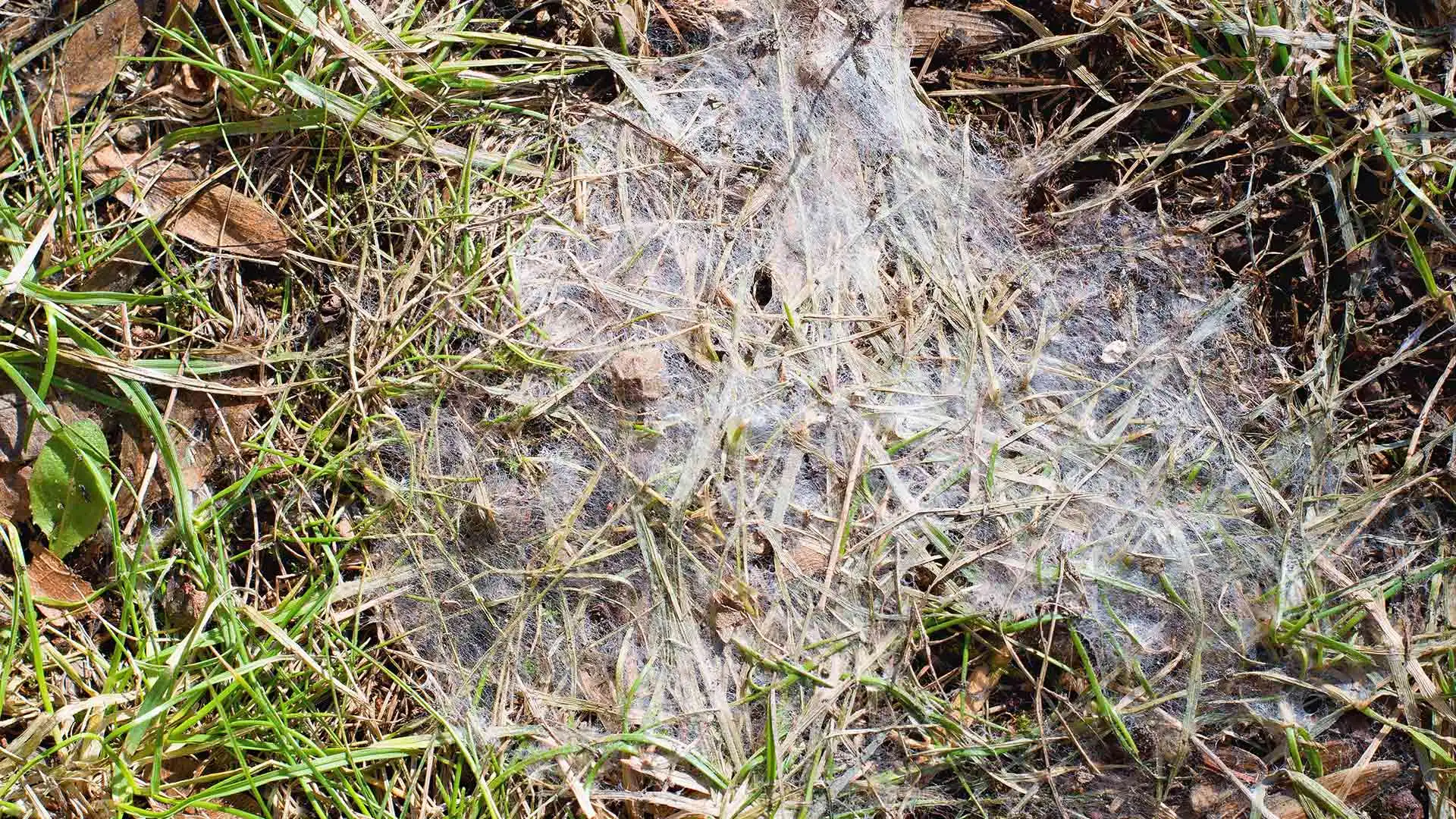Property owners in the Des Moines, IA area should be aware of snow mold. This is a type of lawn disease caused by cold-weather fungus. Snow mold can affect all types of cool-season grass, which are common on lawns in our area. There are two types of snow mold that could affect your grass: pink snow mold and gray snow mold.
These two turf diseases are similar but differ in appearance and the ways they damage your grass. The effects of snow mold are amplified by heavy wintertime moisture. Preventative treatments are crucial to help your lawn fight off snow mold because there are no curative treatments for these diseases.
Pink snow mold can cause severe damage to your turf.
Pink snow mold is a lawn disease caused by a heavy blanket of snow covering turf for extended periods of time. This disease affects lawns at both residential and commercial properties. Pink snow mold is also found on turf at golf courses and athletic fields, among other areas.
This lawn disease often goes unnoticed until the snow melts, which may not happen until early spring in some areas. Pink snow mold can cause your grass to appear pink, tan, or white. Patches of grass that are affected by pink snow mold are usually surrounded by a darker ring of dead grass. Turf becomes discolored because the snow mold kills the grass and its blades become matted on top. Damage caused by pink snow mold is usually more severe than that caused by gray snow mold because it kills the crown and roots of the grass. Gray snow mold's effects are typically limited to the blades of the grass.
Gray snow mold creates large patches of dead grass.
Just like pink snow mold, gray snow mold is caused by heavy snowfall sitting on top of the grass for a long time. Gray snow mold is similar to pink snow mold with a few differences. Like pink snow mold, gray snow mold creates patches of dead, discolored turf on all types of cool-season grass that go unnoticed until snow melts. However, the patches of grass affected by this disease are white or tan. Additionally, gray snow mold creates larger patches of dead turf than pink snow mold, which can be several feet wide in diameter.
Preventing snow mold should be part of your lawn care routine.
Lawn care shouldn't be an afterthought. Some lawn diseases can be remedied by applying fungicide to the affected area. However, curative options are not available to treat gray or pink snow mold. This means that including preventative treatments in your lawn care routine is your best bet to help your turf avoid snow mold. Stopping this turf disease before it starts will help keep your lawn strong throughout winter. Preventative treatments should be applied before snow and freezing temperatures arrive to give the treatments time to take effect.
You can help your lawn recover from snow mold by scheduling lawn care services such as fertilization and overseeding.
Call us today and schedule our preventative snow mold treatment!
Make sure you don't start spring with patches of dead grass all over your turf. Taking action before snow mold sets in will give your lawn the best chance of staying healthy throughout winter. Cold weather in Iowa starts early so we apply preventative treatments in the fall to stop snow mold before it happens. Our preventative treatment is effective against both pink and gray snow mold. We offer our services to property owners in Des Moines, West Des Moines, Ankeny, and nearby communities in Iowa. Give us a call today at (515) 289-2020 to schedule our preventative snow mold treatment!





Comments (0)
Thanks for your comment!
Thanks for your feedback! Your comments have been successfully submitted! Please note, all comments require admin approval prior to display.
Error submitting comment!
There is a problem with your comment, please see below and try again.